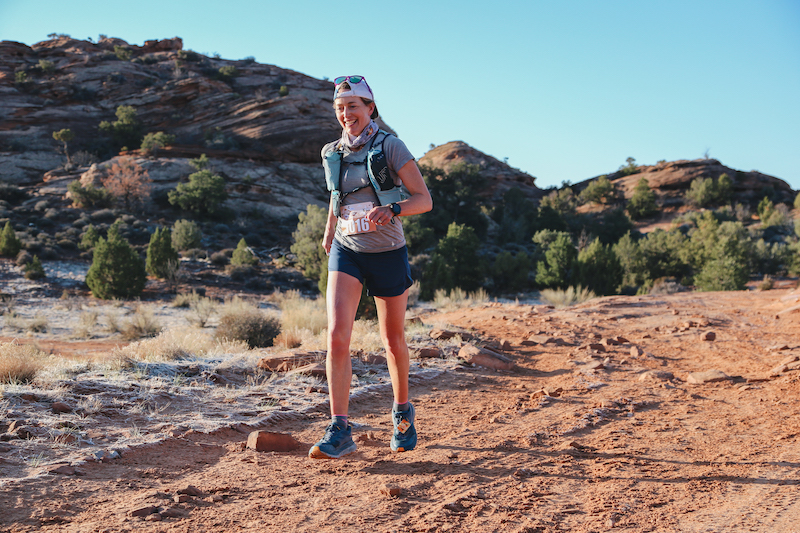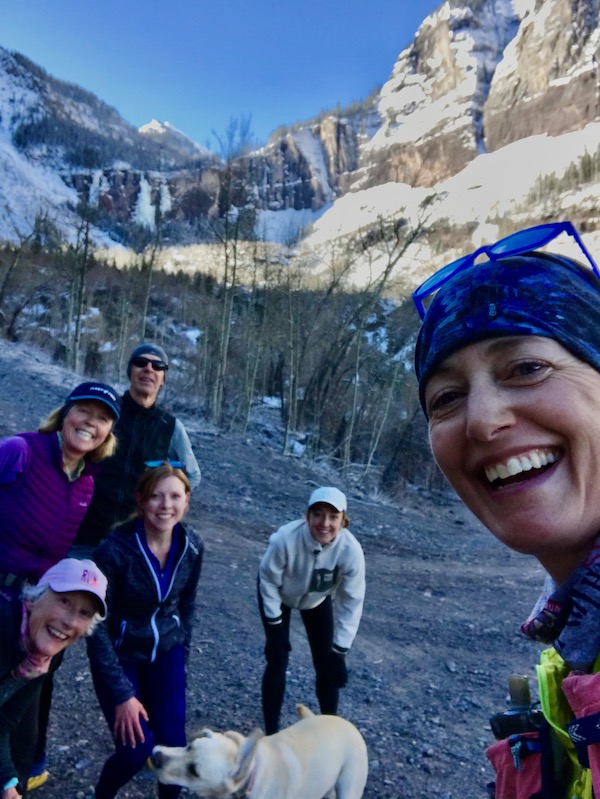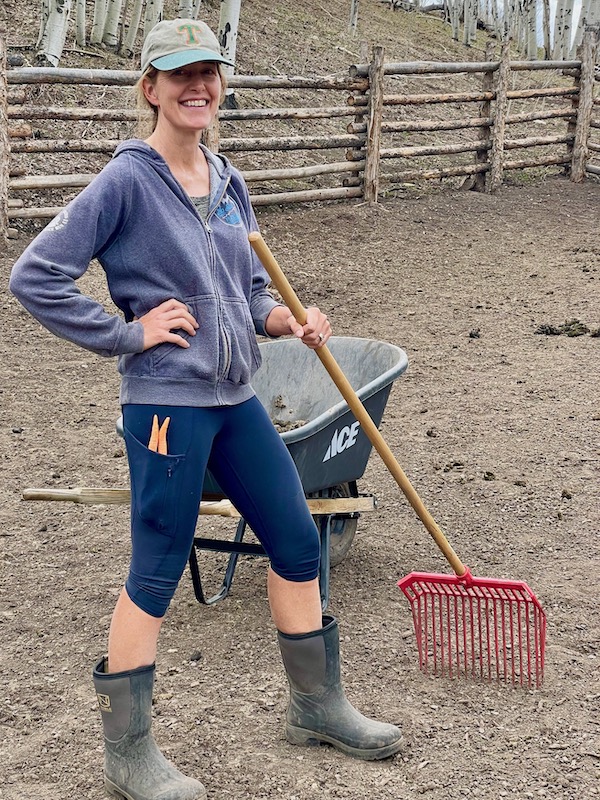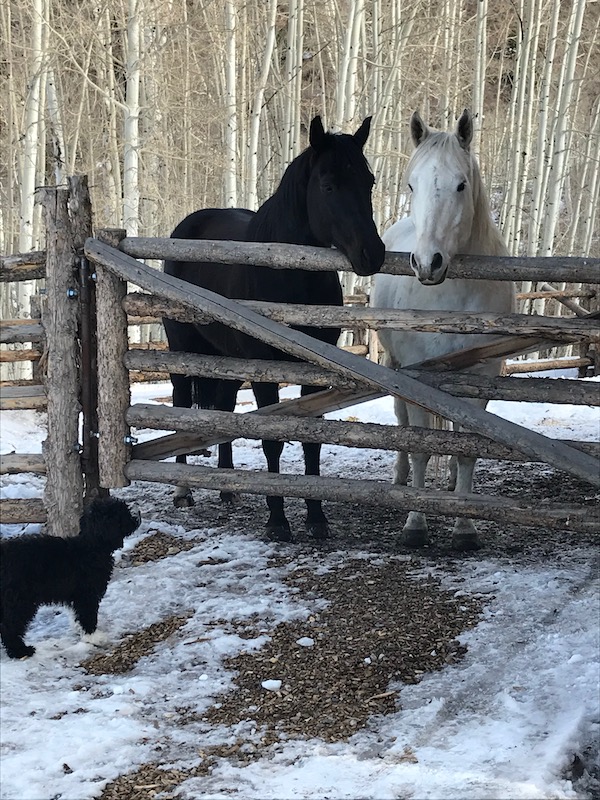I’m getting ready to drive down to the Sedona-Flagstaff area to pace/crew my friend Soon-Chul Choi as he and 177 other participants travel by foot an unthinkable 250-ish miles as part of the inaugural Cocodona 250. I’m meeting him at the mile 181 aid station and accompanying him a little over 50 miles, if all goes according to plan. I doubt I’ll run much at all; by mile 181, runners likely will slog at a tortoise-pace hike through heat in the day and cold at night, stopping for naps along the way, but that suits me fine. My primary running gear now is slow-and-steady with a lot of hiking.
I’m eager for this trail time in a support role, along with Soon-Chul’s other crew team: his girlfriend Naomi (who helped me so much at my 100M in January), his friend Jenny whom I know from the Bay Area, and the needs-no-introduction Billy Yang. I’m in awe and full of admiration for the event organizer Jamil Coury and his company Aravaipa Running. There’s something genuinely exciting about these individuals journeying so far and testing themselves to see if they can make it, on a trail network linking such a vast region between Black Canyon City and Flagstaff.
Almost always, big ultras like this that involve a road trip help clear and refocus my mind and leave me more motivated. I’m counting on this experience to make me feel more energized and more positive about the ultrarunning scene, because to be honest, I haven’t been in a good headspace the past few months.
Where have I been, what have I been doing? It’s hard to answer, because the past season is hazy in my mind. I felt no desire to update this 10-year-old blog. I felt on some days like I couldn’t get any shit done—I couldn’t handle something as simple as paying bills—and I wallowed, unstructured and disconnected. I was the verge of giving up on a lot of things that seemed superfluous, such as journaling, yoga and Spanish study. Even running.
I experienced loathing toward social media, especially the Instagram posts of some notable ultrarunners clamoring for attention and posting innumerable preening selfies. Less active online, I took to mainly sharing photos of our puppy, chickens, horses, and the wild creatures who roam near our home, as if the joy, simplicity and lack of pretension of these animals could somehow show us the way and make us feel better.
I may have been experiencing what a New York Times psychology column described as “languishing,” a feeling of stagnation and emptiness. “It feels as if you’re muddling through your days, looking at your life through a foggy windshield.” This common pandemic-induced feeling involves “the dulling of delight or dwindling of drive.” For me, on the brink of turning 52, languishing manifests as a semi-retired, empty-nester uncertainty of, “What now?” and, “What am I supposed to be doing? What makes me happy and proud?”
“Running” is no longer the satisfying default answer to those questions. I’m still a coach—and feel good about that—but I’m not the runner I used to be, performance-wise or psychologically. Four years ago, by comparison, when my book was published, I wanted to be at the center of this sport and its community and stay on top of who’s doing what, who’s racing where. I still raced competitively in my age group. People recognized my name from bylines in Trail Runner magazine and my voice from co-hosting UltraRunnerPodcast. I thrived and gained an identity from the sport. Now, on the periphery, I barely recognize the names in results columns, and I don’t care much.
To push back against this languishing malaise, I’m going to use this space to make note of some things I did and things that brought me delight since I last blogged. I’m inspired by this excellent podcast interview with poet Ross Gay on book, The Book of Delights, chronicling small joys that occurred during a year.
In January, like others, I celebrated the peaceful inauguration and felt a layer of anxiety lift because the toxic, mendacious former president could no longer poison the news every day. I felt a rekindling of hope from normalcy and decency.
In February, I traveled to LA twice to spend time with my daughter, to enjoy her company and help her through a rough patch emotionally. I reveled in “mom mode” while cleaning her apartment, stocking her pantry, taking her shopping, even sharing her bed. She wanted me there, and I can’t think of anything that tops the feeling of a grown child still loving and needing her mother.
In March, I went to Moab with a group of women I had coached for four months and supported them as they ran the Behind the Rocks 30K/50K. I also ran the 50K, but that’s beside the point. I was in “mom mode” again for these younger runners at that event, wrapped up in how the other women were doing and worried about one who might drop. They all made it. Their joy and even empowerment from the experience gave me a bit of a contact high and reminded me of the value of a beginner’s mindset—the appreciation of just being there, doing it, with little to no performance pressure because simply running the distance, through that landscape, is awesome.

Running the Behind the Rocks 50K in Moab, late March.
In April, Morgan and I traveled to Santa Fe to get our horses, who had spent a couple of the winter months in the care and training of Katrin Silva, an accomplished dressage trainer and big-time ultrarunner. This couple’s getaway—staying in a hotel, eating out, browsing stores like tourists—felt extra special and romantic after a year of the pandemic. But the true joy of that trip came from riding in the saddle, being coached by Katrin, and realizing this is my other sport, a reconnection to an upbringing when horses were as important to me as friends and siblings.
Daily caring for and exercising these two puppy-like but powerful horses—Cobalt and Maverick—grounds and relaxes me as much or maybe even more than running. The horses, however, cut into productivity and work time indoors. I spend on average two hours a day grooming, riding, and filling a wheelbarrow full of manure to keep their paddock clean. Add running on top of that, and I’m spending about half of each day outdoors. I know this outdoor time is a blessing, and not needing to work full time for income is a privilege. But I struggle with time management, feeling frustrated and guilty at times that I don’t make more progress on “real work.”
Also in April, having been fully vaccinated, I restarted twice-weekly strength conditioning classes at a Telluride gym, and once-a-week group runs with friends in town. I’m brimming with post-pandemic gratitude for these small-group gatherings at the gym and with other runners. Maybe the languishing had partly to do with loneliness? The act of getting up and out the door on time to meet others, and the camaraderie of working out and running with them for an hour, improves the whole day.

Run club meetup, with the frozen Bridalveil falls in the background, last Wednesday morning.
Since new year’s, another commitment has challenged my time management while bringing a mix of joy and frustration. I took on the leadership for a local nonprofit, Telluride Rotary Club, which is part of Rotary International. I didn’t foresee myself in this role, until asked to serve—although, ever since my late 30s, nonprofit board service has been a calling. I joined the club when we moved here year-round because my dad had been active in it, and I wanted to become more engaged in the community. I saw the local club dwindling in membership and lacking energy, so I decided to help modernize and grow it. I love bringing people together, lining up engaging speakers for meetings, and initiating and supporting worthwhile service projects. But behind the scenes, it’s a great deal of work, basically a part-time unpaid job.
Over the past couple of months, I also worked on a feature-length article that will come out this summer in Telluride Magazine. The story involves the region between here and the Utah boarder, a gorgeous, rural, economically struggling area with a high-desert landscape that transitions from forest to red rock. I went off on a tangent researching my grandfather’s time as a rancher there in the late 1920s and ’30s, and then I began nurturing a far-fetched dream to open a business in one of the small towns out there. Then I planned a 100-mile two-day run over some of the region’s remote backroads that I might actually do in the last week of May. The point is, I got obsessed and distracted by this one assignment, which proved both delightful and distressing, because in the end I had to distill it into a 2000-word so-so article.
My semblance of a professional life jumps erratically between tasks, projects and clients’ coaching plans, and this as much as anything is why I still run and build up to ultras, for the structure it imposes on my schedule, for the unplugged thinking time it provides, and for the goals it sets on my calendar. Each of these past three weekends, I managed a long run longer than 20 miles, motivated to get in shape for the 50-mile Bears Ears Ultra in late June and then my main goal, the High Lonesome 100 in late July.
Morgan asked if I might settle for running shorter distances after this summer, and yes, I might. I’ve been struggling with discomfort in my back and upper hamstring whenever I run longer than a couple of hours. (I had a couple of PT sessions that didn’t help much.) I don’t need to do ultras forever. It’s no longer the be-all and end-all of my adulthood. Just being outdoors and moving by foot through the mountains is what’s important and satisfying to me now.
I’m as much a hiker as a runner anymore, and that’s partly what appeals to me about High Lonesome, much of which is un-runnable due to slope and terrain; I can be a mountain-goat-like trekker. I want to ascend to those high ridge lines, make it all the way through Monarch Pass, then get back in the afternoon of Day 2 before the cutoff. I want to spend the night traversing the trail with my pacer Clare by my side again. These are my simple mid-packer goals of ultrarunning these days.
When I wrote this yesterday, I looked outside the window from my office in our loft and saw the pastures greening. The aspens are still silvery bare, their leaves two weeks away from budding. I heard the rumble of Morgan driving the skid-steer, moving dirt for some project (he has been tinkering with irrigation and expanding the chicken coop). I joined him outside and took care of the horses, collected eggs from the chickens, and washed the mud off the dogs’ paws before letting them back inside.
Today, a storm moved in, and snow turned the landscape white—for an afternoon at least. I’m marveling at the day’s mix of clear raindrops, pellet-like graupel and a few inches of soft snow. No longer dulled, my senses are focusing on these delights day by day while I try to care a little less about things like productivity, performance and planning, and just be.

How I looked on Sunday afternoon (and on most days).

Maverick and Cobalt

Dakota and Beso
And the coyote who hangs out next to our home and hunts voles:

Thank you for being saw raw and real! I think you are amazing and inspiring just for that reason alone. I too felt that languishing period and almost started an antidepressant but thankfully it passed well it waxes and wanes. Mediation has helped. At 51 I too am struggling to find my what’s next in life. Sounds like you have a great support network and are starting to get your groove back. Don’t stop writing we need your words.
Sarah
I identify so much with your comments … due to a combination of injury and lockdown I have struggled to exercise as much as I normally would do in the 12-18 months and this led me into a bit of a low time, as the last year has for us all.
It is hard to recognise (or for me it is anyway!) that things change over time and we are not the same as we used to be. No worse or better, just different!
Thank you for sharing your thoughts and struggles, it makes me realise I am not alone in feeling this way, which helps more than you can possibly know …
Sarah,
If I can finish High Lonesome, you can too…Hope to see you at the finish line. (I’ll be sweeping, so really don’t want to see you till then).
As an ultrarunner in the years past, I too know it’s hard to downshift. It’s like breaking up with a long term partner. Your whole identity is wrapped in running and when things begin to shift and you run less and begin to get slower it’s like losing a part of yourself. Thank you for your story so others can relate. Love your horses and landscape. Take good care.
I really enjoy your writing!
Sarah, thank you for sharing your truth – it’s inspiring and comforting. I always enjoy your writing. And the video of the coyote is special – a lesson in respect, tenacity, and beauty. Thanks for posting.